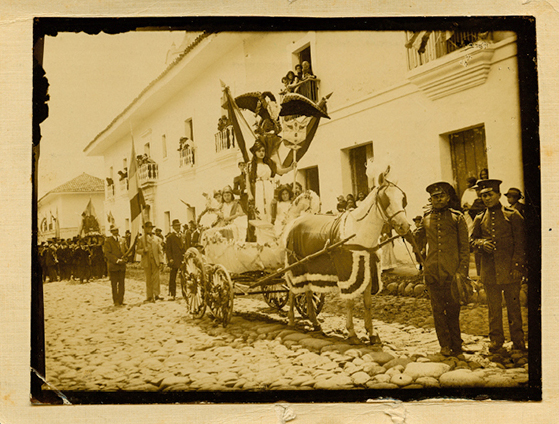Colombia’s largest public library Biblioteca Luis A?ngel Arango has reached a 60-year milestone, and part of its comprehensive cultural agenda is dedicated to showing its extensive collection of historical documents and paintings.
In an age of “fake news” and social media misinformation, the Central Bank’s leading educational institution aims to defend the importance of “evidence” when registering events, such as those that have marked Colombia and shaped its national identity. With this objective in mind, and to celebrate their sexagenarian anniversary, the exhibition BLAA 60 años: evidencias para una nacio?n (BLAA 60 years: evidence of a nation) opened in July. “As we gather knowledge, evidence is the basic requirement to reach conclusions and build a system of truths that, we know, change with time,” remarked Alberto Abello, BLAA’s director, during the inauguration.
However, this temporary exhibit doesn’t claim to have the final word on truths, instead, presents various narratives, even contradictory ones, of what kind of nation Colombians have built. In order to get audiences interested in the topic an exceptional sample of the patrimonial treasures from old books to photographs and historical letters, all rarely seen, are currently being exhibited. “BLAA 60 años” is organized in nine parts, with section titles such as El amor y su poder como constructor de nacio?n (Love and its power as a nation builder); La paz y la guerra a través de la historia colombiana (Peace and war through Colombian history) and La educación como forjadora de transformaciones (Education as the forger of transformations) helping visitors get an up-close account of almost every facet of Colombian life. Curated by novelist and journalist Andrés Arias, the exhibit looks at how land and property has played a key role in the internal conflict; how migrations gave way to large-scale urbanization; and why Colombians love rituals and partying.
Everyday life is also captured in sepia-toned photographs and parched letters, giving importance to history as evidence. “The original letters allow visitors to understand how Colombians have loved throughout history,” states Arias, as one example. Even how radio has played a key role in courtship, especially among those living in remote regions of the country.
Family portraits share wall space with newspaper headlines, and as much as this exhibit is as about small details, it presents a larger vision of nation- building – one particularly relevant as the country ends more than a half- century of conflict. “We want visitors of all ages to be interested in what it means to be Colombian, and through storytellers, dream that a better nation is possible,” states Arias.
Until February 2019. Free admission
Biblioteca Luis A?ngel Arango – Calle 11 No.4-14.

